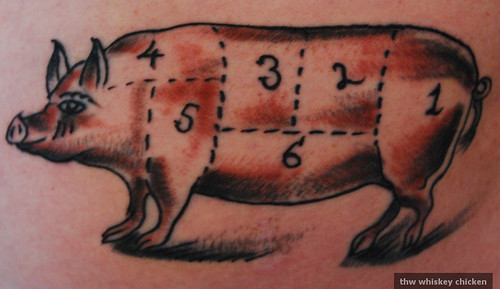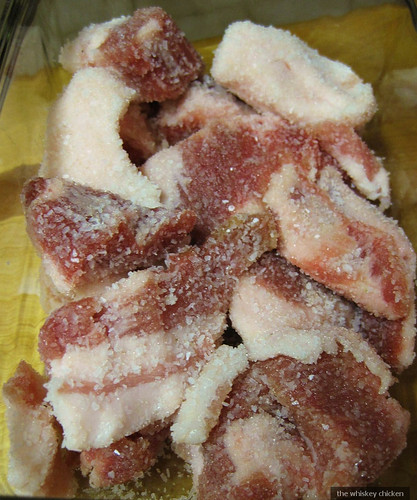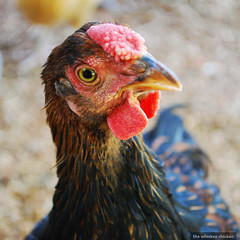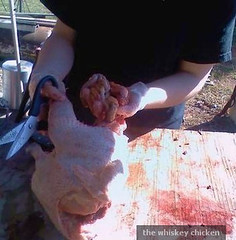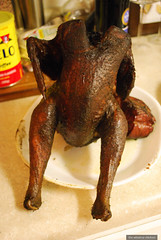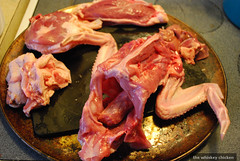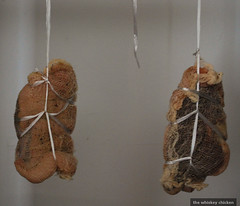 |
| Oh Snap! Pie! |
I really can't think of a reason why I shouldn't talk about pie right now. I have been toiling for years to come up with the perfect recipe. And while it's actually not that late in the evening at all, I have had a little too much wine you see, so thoughts just naturally turn to pie.
I am not a baker. Not even remotely close to it. It really pains me to even try, which is why I do it. Have you ever heard the saying "Cooking is an Art, and Baking a Science"? Yeah, that's so true, and I really suck at Science. I have been perpetrator to countless baking experiments gone horribly wrong. Crusts that didn't brown...doughs that didn't rise...fillings that spilled over...oven fires...I have done (or not done) it all.
So when one such as myself finally perfects the elusive pie recipe (crust from scratch and everything ) it really is a big deal. Like blog about it big deal. So with some help from Ms. Stewart, here is my tried and true pie recipe.
Crust Ingredients:
2 1/2 c all-purpose flour
1 c (2 sticks) salted butter,
very cold, cut into small chunks
1 tsp salt
1 tsp sugar
6 - 8 T ice water
Ok, a few things first before we get started. When it says cold, seriously...it means cold. This is something I have always bypassed before. No really, it needs to be
COLD! I am not just referring to the butter and the water, but also the workspace and your
own two hands (hold under cold water for a few seconds). You do
not want the butter to start melting yet! Why? This develops the gluten, which makes the dough tough. Tough is not always cute, and certainly not tender and flaky.
Chill the water in the freezer for several minutes, and the butter for up to an hour.
Salted butter? Really? Yes. I know, I know, everyone swears by unsalted when baking, but really, there is such a minimal amount of salt in "salted butter" anyway that it doesn't make much of a difference. And salt is really just flavor right?
So now that we have that out of the way...
Blend the flour, sugar, and salt in a food processor.
Add the butter chunks and pulse until the mixture resembles small peas. (You can do this by hand with a pastry cutter, but I find a food processor blends more quickly and efficiently, which means less time for the butter to warm up.)
Add the water (a little at a time), until the dough starts to come together.
Turn dough out onto a floured board, divide into two halves, wrap in plastic wrap, and refrigerate for at least 1 hour (1 hour!? Yes! 1 hour!).
After 1 hour, take one half of the dough and roll out to a size slightly larger than your pie plate. Make sure to roll from the center and out, not from side to side (and make it thin!).
Preheat oven to 450 degrees F.
Roll dough around your rolling pin and unroll onto pie plate.
Filling Ingredients:
7 large apples (my favorite is Pink Lady) peeled, cored, and cut into varying slices (I say varying slices for texture's sake. The thinner slices will cook down into a applesauce-like consistency, while the thicker slices will remain slightly crunchy.)
3/4 c sugar (or less depending on the sweetness of the apples)
1/4 tsp salt
1/2 tsp fresh nutmeg, grated
1/2 tsp ground cinnamon
2 1/2 T cornstarch
1 T lemon juice
pinch of fresh lemon zest
pinch of ground cloves
1/2 vanilla bean, halved and scraped (don't skimp here and use the extract, trust me.)
2 T butter, cut into chunks and chilled
Mix all of the ingredients together except for the butter.
Fill the bottom half of the pie crust with the apple mixture, mounding the apples up.
Dot the apples with the butter.
Roll out the other half of the pie crust, roll onto rolling pie, and unroll over filled pie.
Use egg wash (1 egg beaten with 1 T water), to brush and seal the two pie crust edges together.
Trim the crust overhang with kitchen shears.
Crimp the edges together with either your fingers or a fork.
Cut 3 small flutes into the center of the crust.
Brush the top with the egg wash and sprinkle with both raw and table sugar (That texture thing again).
Transfer to baking sheet and bake at 450 for 15 min.
Reduce heat to 350 degrees F, bake for 1 hour (or until crust is delicious golden brown, cover edges with foil if it browns too quickly).
Cool on wire rack 1 hour before serving, IF you can wait that long.
And that is it. My personal favorite recipe for an apple, or any other fruit, pie (ask me about fresh cherry pie this summer). It is certainly easier to buy the crust from your local grocer's freezer, but you don't strike me as the kind of person who would do that...
 |
| Pielicious |
